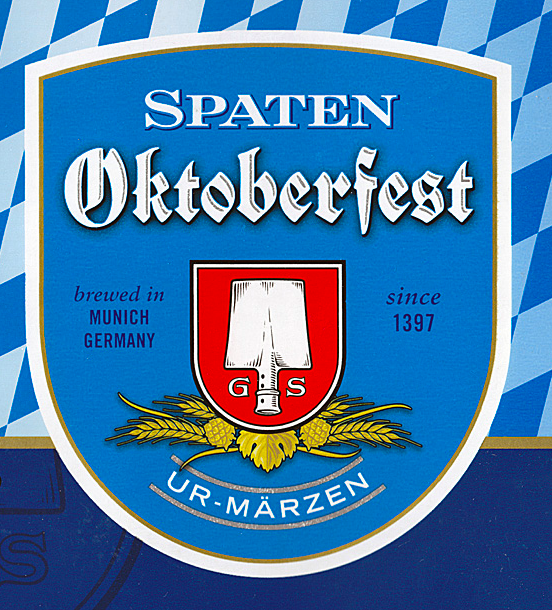The spring brewing traditions continued into the industrialization of German beer in the early 19th century and it was in those more modern conditions that the beer we know today as Oktoberfest or Märzen was born. Brewers Gabriel Sedlmayr at Spaten in Munich and Anton Dreher of Dreher in Vienna are credited with creating the modern Oktoberfest/Märzen recipe. The two brewers ultimately agreed on a recipe that used a combination of pale pilsner style malt (probably German 2 Row) and what we now called Vienna Malt (a lightly caramelized pale malt) as a base for the beer, moving away from the heavy malts of the past, which meant that they also had to change the hop schedule to balance the lighter grain bill. The resultant beer was lighter in color, lighter in body and was fermented with a bottom fermenting lager yeast that finished the beer at around four percent a.b.v. The beer was an instant hit and other Munich brewers quickly followed Spaten and Dreher’s lead. Today’s German producers still follow the same basic recipe, creating a pale amber, low-hopped, medium-bodied lager that is only slightly heavier than a German or Austrian pilsner. Craft brewers both in Europe and here in America. however, have gone back to the beer’s earlier traditions and the careful beer consumer can find some wonderfully rich, malty, hoppy and delicious examples of an older style Oktoberfestbier (See list below).
The Oktoberfest festival is shrouded in myth and misconception, most believing that the ceremonial drinking of spring beer at the end of the summer was the festival’s genesis. Yet, most historians agree that the festival had nothing to do with beer and began instead as a party celebrating the nuptials of Ludwig I and Therese of Saxony-Hildburghausen in 1810, a party that would be repeated every year during Ludwig’s reign becoming tradition upon his death. Of course beer was consumed during these first celebrations, but it wasn’t the primary focus. In fact, it wasn’t until the mid nineteenth century when horse racing was dropped from the program and brewers, musicians and food vendors rushed in to fill the vacuum that beer became the center of the festival. Today only six breweries can produce Oktoberfest beer for consumption during the 16-day Munich festival. They are Augustiner-Bräu (independent), Hacker-Pschorr (Brau Holding International), Paulaner Bräu (Brau Holding International) Löwenbräu (ABInBev), SpatenBräu (ABInBev), and Hofbräu Müchen (Bavarian state owned). Sadly most of the Oktoberfestbiers available at Oktoberfest are owned by one of the macro/corporate holding companies.
If you want to avoid the macros and celebrate Octoberfest the way it used to be I’d hit up your local bottle shop and see if you can find:
Hacker-Pschorr “Oktoberfest-Märzen” (German)
While they are one of the larger breweries in Germany their Oktoberfest-Märzen is said to have been the original beer served by Ludwig I at the first Oktoberfest. It’s imported into the U.S. by Paulaner/HP U.S. and pretty widely available.
Augustiner Oktoberfestbier (German)
Hard to find, but not impossible. Just be sure to get fresh bottles from a trusted source (lots of people on the Internet complain of skunked bottles). I mention this beer because it’s the last German Oktoberfestbier to be served from wooden casks at their festival tent in Germany. And anyone who has had the pleasure of sipping this beer straight from the cask raves about it.
At the risk of sacrilege, I’m going to say that American craft brewers are making some of the best modern Oktoberfesbier in the world. My favorites are, in no particular order:
Great Lakes “Oktoberfest”
Avery’s “The Kaiser”
Three Floyd’s “Munster Fest”
Harpoon Brewery “Oktoberfest”
Bell’s “Octoberfest”
Firestone Walker “Oaktoberfest”
Hanger 24 “Oktoberfest Fall Lager”
Deschutes “Fresh Hops Oktoberfest” (Portland and Bend Taprooms only)
Rahr and Son’s Brewing “Oktoberfest”
Strike up the oom-pah band, strap on some lederhosen, grab yourself a sausage and grab your favorite stein or mug it's time to get your German on. Happy Octoberfest!


